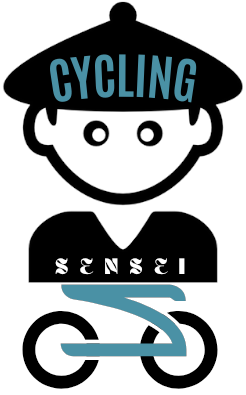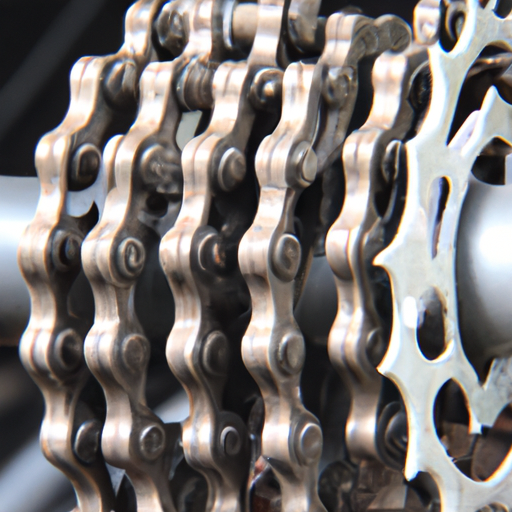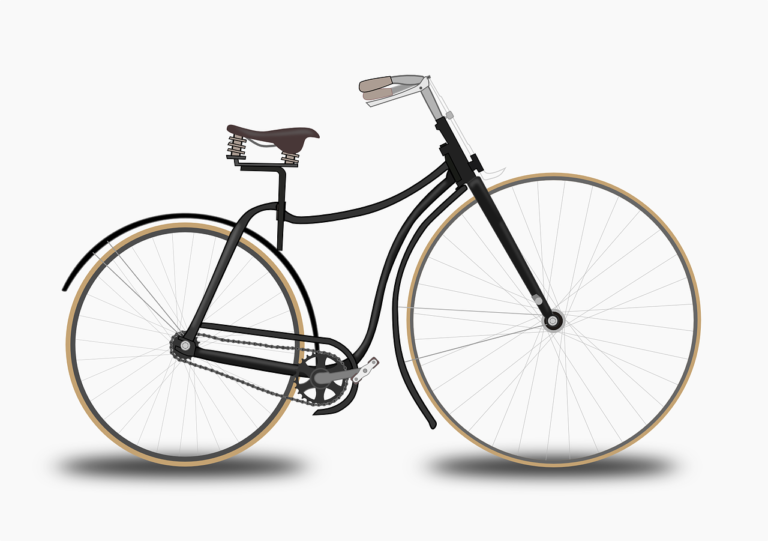How Often Should I Replace My Bike’s Chain?
Have you ever wondered how often you should replace your bike’s chain? It’s an important question that many cyclists ask themselves. After all, a well-maintained chain is crucial for a smooth and efficient ride. In this article, we will explore the factors that determine the lifespan of a bike chain and provide you with some helpful tips on when it’s time to swap out your old chain for a new one. So, buckle up and get ready to pedal into the world of bike maintenance!
Factors affecting chain lifespan
Usage frequency
The frequency at which you ride your bike plays a significant role in determining the lifespan of your chain. If you are a daily rider who logs many miles, your chain will generally wear out faster compared to someone who rides only occasionally or on weekends. The repetitive motion of pedaling puts strain on the chain, causing it to stretch and wear over time.
Riding conditions
The conditions in which you ride your bike also impact the lifespan of the chain. If you primarily ride in dry weather conditions, your chain is likely to last longer as there is less dirt and debris that can cause premature wear. On the other hand, riding in wet or muddy environments can accelerate chain wear due to the increased exposure to moisture and abrasive elements.
Maintenance practices
Proper maintenance practices can greatly extend the lifespan of your bike’s chain. Regular cleaning and lubrication help to remove dirt, grime, and moisture that can cause excessive wear and corrosion. By keeping your chain clean and well-lubricated, you can minimize friction and reduce the likelihood of premature chain failure.
Signs it’s time to replace your bike’s chain
Chain elongation
One of the most common indicators that your bike’s chain needs replacement is elongation. Over time, the pins and bushings in the chain wear down, causing the chain to stretch. You might notice that the distance measured between a number of links increases when you inspect your chain. This elongation can lead to poor shifting performance and increased wear on other drivetrain components.
Skipping gears
If you experience frequent gear skipping while riding, it could be an indication that your chain is worn out and needs to be replaced. A worn chain may not sit properly on the teeth of the cassette or chainrings, causing the chain to slip. It is crucial to address this issue promptly as riding with a skipping chain can lead to sudden gear shifts and potential accidents.
Excessive chain wear
Inspecting your chain regularly for signs of excessive wear is crucial for maintaining a safe and efficient ride. Look for noticeable signs of stretching and roller wear. If the chain’s rollers appear to have grooves or significant signs of wear, it is a strong indication that the chain has exceeded its usable lifespan and needs replacement.
Chain noise
Unusual chain noise during pedaling can be a sign that your chain has worn out and needs replacing. A well-lubricated and properly maintained chain should remain relatively quiet. If you hear creaking, grinding, or clicking sounds coming from your chain, it is a clear signal that it’s time to invest in a new one.
Chain inspection methods
Visual inspection
A visual inspection is a simple and effective way to determine the condition of your bike’s chain. Look for signs of wear, such as rust, dirt buildup, or missing rollers. Check if the chain appears straight and properly aligned on the cassette and chainrings. Keep an eye out for any visible signs of elongation or damage.
Chain checker tool
For a more precise assessment of chain wear, you can use a chain checker tool. This tool measures the elongation of your chain by gauging the distance between the links. By comparing the reading with the manufacturer’s recommended limit, you can accurately determine if it’s time for a replacement.
Chain replacement intervals based on usage frequency
Daily riders
For riders who use their bikes daily, it is generally recommended to replace the chain every 2,000-3,000 miles (3,200-4,800 kilometers). This interval ensures that the chain is replaced before significant elongation occurs, reducing the risk of premature wear on other drivetrain components.
Regular riders
If you ride regularly but not as frequently as daily, replacing your chain every 3,000-5,000 miles (4,800-8,000 kilometers) should be sufficient. Regular inspection and maintenance can help you determine if your chain needs replacement sooner or if it can last longer before reaching the recommended replacement interval.
Occasional riders
For occasional riders who use their bikes sporadically or on weekends, replacing the chain every 5,000-7,000 miles (8,000-11,200 kilometers) should be adequate. However, it is essential to monitor your chain’s condition regularly and replace it promptly if any signs of wear or elongation are present.
Chain replacement intervals based on riding conditions
Dry weather conditions
If you primarily ride in dry weather conditions, your chain can last longer compared to those who ride in wet or muddy environments. In these conditions, replacing the chain every 2,000-4,000 miles (3,200-6,400 kilometers) should be sufficient, as there is less exposure to moisture and debris that can accelerate wear.
Wet or muddy conditions
Riding in wet or muddy conditions exposes your chain to moisture and abrasive elements, which can significantly shorten its lifespan. To ensure optimal performance and prevent premature wear, it is recommended to replace your chain more frequently in these conditions, typically every 1,000-2,000 miles (1,600-3,200 kilometers).
Off-road or mountain biking
Off-road or mountain biking typically subjects the chain to more demanding conditions, including rough terrains, dirt, and mud. Due to the increased stress on the chain, it is advisable to replace it more frequently, with intervals ranging from 1,000-2,000 miles (1,600-3,200 kilometers) depending on the severity of the conditions and the intensity of your off-road adventures.
Chain compatibility and wearing factors
Chain compatibility with cassette and chainrings
When replacing your bike’s chain, it is important to ensure compatibility with the cassette and chainrings. Different brands and models may have variations in the width and design of their chains. Choosing the appropriate chain that matches the specifications of your drivetrain components will ensure optimal performance, smooth shifting, and increased lifespan.
Chainring wear indicators
The wear on chainrings can directly impact the lifespan of your chain. Chainring teeth can become blunt or sharp due to extensive use or poor shifting techniques, causing accelerated chain wear. Regularly inspect the chainrings for signs of wear, such as shark-fin-like teeth or hooked teeth. If significant wear is detected, it is advisable to replace not only the chain but also the worn chainrings to maintain proper chain engagement and prevent premature failure.
Cassette wear indicators
Similar to chainrings, the cassette also experiences wear as the chain interacts with the teeth. Over time, the teeth on the cassette can become worn or damaged, affecting the performance and lifespan of your chain. Some cassettes have wear indicators, helping you determine when it is time for replacement. If the teeth on your cassette appear overly worn or damaged, consider replacing the chain and the cassette together to ensure optimal performance and longevity.
Importance of regular maintenance
Cleaning the chain
Regularly cleaning your bike’s chain is essential for its longevity. Accumulated dirt, grime, and debris can cause increased friction, leading to chain wear and poor performance. By removing the dirt and applying a suitable degreaser, you can keep the chain clean and minimize the risk of premature wear. After cleaning, thoroughly dry the chain and apply a lubricant to reduce friction and enhance its performance.
Lubrication
Proper lubrication of the chain is crucial for maintaining a smooth and efficient ride. Applying a high-quality bike chain lubricant at regular intervals reduces friction between the moving parts, preventing premature wear and corrosion. It is important to choose the right lubricant for your specific riding conditions, whether wet or dry, and reapply it periodically to ensure optimal performance.
Avoiding cross-chaining
Cross-chaining occurs when you use extreme gear combinations that strain the chain and drivetrain. This can lead to accelerated wear and potential chain failure. To prolong the lifespan of your chain, avoid cross-chaining by maintaining a proper gear combination that aligns with your riding conditions and intensity.
Chain replacement methods
DIY chain replacement
Replacing the chain yourself can be a straightforward process with the right tools and knowledge. Start by removing the old chain using a chain tool and then install the new chain, ensuring proper alignment and tension. It is essential to carefully follow the manufacturer’s instructions and seek guidance if you are uncertain about any step. DIY chain replacement allows for cost-saving and empowers you to maintain your bike’s drivetrain with confidence.
Professional help
If you are unsure or uncomfortable with replacing the chain yourself, seeking professional help is a viable option. Bike shops and certified mechanics have the expertise and experience to accurately diagnose and replace worn chains. They can ensure proper installation, optimize shifting performance, and offer additional advice on maintaining your chain and drivetrain components.
Benefits of timely chain replacement
Improved shifting performance
Replacing your bike’s chain at the recommended intervals enhances shifting performance. A worn chain can cause poor shifting, gear slipping, and missed shifts, which can be frustrating and affect your overall riding experience. With a new chain, your bike’s gears will engage smoothly and accurately, allowing for seamless shifting and improved efficiency.
Reduced wear on other drivetrain components
A worn chain can be detrimental to other drivetrain components, including chainrings, cassette, and derailleur pulleys. When a chain elongates or becomes excessively worn, it places increased stress on these components, accelerating their wear and potentially leading to additional costly repairs. By replacing the chain on time, you help protect and extend the lifespan of these critical parts, saving you from unnecessary expenses.
Prevention of chain failure
A worn-out chain is more prone to sudden failure and breakage, which can have severe consequences while riding. A broken chain not only leaves you stranded but can also cause accidents or injuries. By replacing your chain before reaching its maximum usable lifespan, you significantly reduce the risk of unexpected chain failure and ensure a safer and more enjoyable ride.
Conclusion
Regular chain inspection, maintenance, and timely replacement are crucial for ensuring the longevity and optimal performance of your bike’s drivetrain. Factors such as usage frequency, riding conditions, and maintenance practices play key roles in determining chain lifespan. By recognizing the signs of wear, regularly inspecting your chain, and following the recommended replacement intervals, you can maintain a reliable and safe cycling experience. Remember to choose the appropriate chain for your drivetrain, perform proper maintenance, and seek professional assistance or DIY replacement as needed. With a well-maintained chain, you can enjoy smooth shifting, reduce wear on other components, and prevent unexpected chain failure during your rides.




